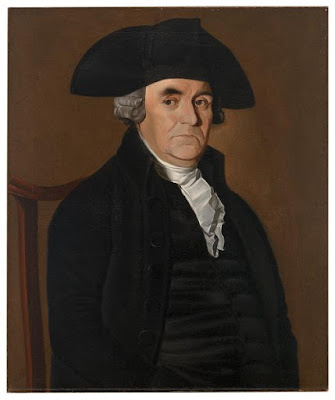 |
| Mohican Native American Indian |
Native Americans played a crucial, often overlooked, role in the French and Indian Wars [a series of conflicts that occurred in North America between 1688 and 1763]. The British and French relied on Native American support as scouts, soldiers, and diplomats. The conflict, characterized by border raids, saw both sides utilizing Native American allies to their advantage. This involvement was a key factor in the war's brutal and devastating nature. The Native American people from the Algonquin, Lenape, Wyandot, Ojibwa, Ottawa, Shawnee, and the Mi’kmaq sided with the French. The British were supported by the Six Nations of the Iroquois Confederacy [the Mohawk, Oneida, Onondaga, Cayuga, Seneca, and Tuscarora], Cherokee [before 1759], and the Stockbridge Mohicans -- although part of the Eastern Algonquian Native American tribe.
Below are some excerpts from the book, "The Mohicans of Stockbridge", by Patrick Frazier that pertain to Fort Massachusetts.
"As 1745 drew to a close, alarms and rumors of enemy attacks grew frequent among the frontier towns. Militia rushed to Stockbridge from other parts of western Massachusetts and Connecticut. The tracks of enemy Indians were reported several times around Stockbridge, and Indians were accused of burning a barn within the town's boundaries in the middle of December. This was a direct threat to the Mohicans' heartland, and the Stockbridges had to act, especially if their colonial brethren were not to suspect their allegiance. A week later, the Stockbridge Mohicans sent a war belt to the other villages, declaring war with the French.
"Frontier attack by Indians allied with the French increased in 1746, and full-scale Indian commitment seemed inevitable. Some officials, among them [Governor] William Shirley, were reluctant to use Indians in colonial warfare because of their tactics, but the governor was considering fighting fire with fire. On May 30, 1746, he received a letter that helped persuade him. John Sergeant and Ephraim Williams urged Shirley to start using Indians who were already aligned with the English interest.
"The governor and the General Court quickly approved the idea by voting to raise more men for the frontier: sixteen Stockbridge Indians and four colonials. This measure would also benefit the Stockbridges, who would be able to fight and defend themselves with government support.
"The tempo of attracting Indian allegiance in the war effort increased as the New York governor and Massachusetts officials held another conference in Albany beginning August 19, 1746. [The govenor] reminded them of recurring French and Indian attacks against their colonial brethren in Massachussetts and announced an intended joint Iroquois-English retaliation aganst Canada, which he urged them to join: You will not only gain honor and renown but also safety and prosperity, to your selves, your wives and children, for ever afterwards, and for which ends I will furnish your fighting men with arms, ammunition, clothing, provisions, and every thing necessary for the war.
"For three days, the Mohicans held council among themselves. ...the six Nations' representatives agreed to take up the hatchet...
"The timeliness of this agreement was boldly punctuated by the French capture and burning of Fort Massachusetts ... on the same day that the Albany conference had begun.
"Massachusetts, in the meantime, had fully committed itself on paper to employing Indian-style warfare against the enemy.
"In April of 1747, about a dozen Stockgridges were outfitted for duty at Northampton and sent to Fort Massachusetts, where some of the forces destined for the Canadian expedition were stationed. For much of the year, the town of Stockbridge accommodated seven hundred soldiers, who must have put a considerable strain on local resources. One of Ephraim Williams's sons [Ephraim Williams Jr.] was commissioned a captain* at Fort Massachusetts.
"On May 19th, Captain Williams left for Albany with a company of men, including some Stockbridge Indians, to procure supplies for the fort. Among the Stockbridges was Ensign Konkapot, probably the chief's son Robert, who was about twenty-two. Returning from Albany with a convoy of wagons, Williams kept Indian scouts and a road crew out front. When this advance party got close to the fort, they stumbled onto a nest of about twenty enemy Indians, who opened fire on them and the fort at the same time. The skirmish was hot but brief. Captain Williams's convoy approached while those inside the fort discharged cannons toward the swamp where the enemy Indians lay. They fled, leaving most of their outfits behind, but not before venturing out to retrieve a strip of scalp from the only man killed in action--a Stockbridge Indian.
"For the Stockbridges, the loss of even one man was a blow, since, at the time, their strength was only about fifty men.
"Wampum messages, flavored with metaphorical, cryptic diplomacy, were exchanged between the Stockbridges and other tribes to report conditions, to offer advice, and to encourage perseverance."
 |
| “An Indian of the Stockbridge Tribe,” Sketch by Lieutenant General Johann von Ewald (1744–1813). Pen and ink. |
Excerpts from the book, "The Mohicans of Stockbridge", by Patrick Frazier (1992).
Published by the University of Nebraska Press.
Compiled and Edited by C.A. Chicoine
Special thanks to Abby Adam for the source material.
[*In this book, Fraier had mistakenly listed Ephraim Williams Jr. as a major. At the time, he was a captain. He would later become a colonel.]
Related Links:
- Stockbridge-Munsee Community
- The Mission House
- The Revolutionary Mohicans of Stockbridge, by Abigail Adam
















